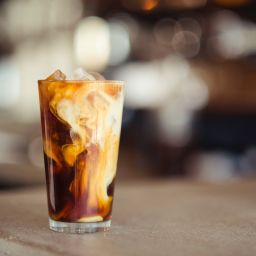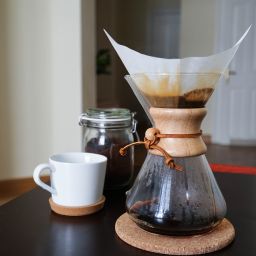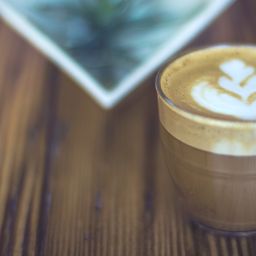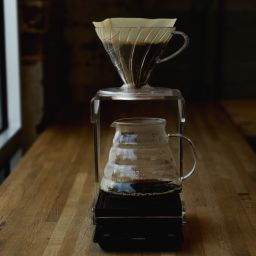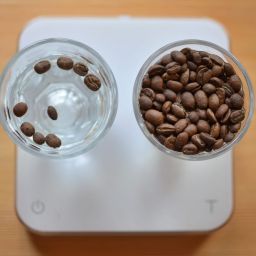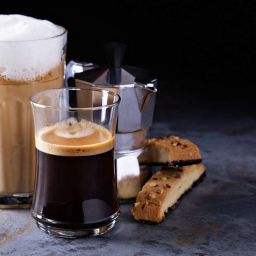
Coffee brewing is more than just a morning ritual; it’s an art form that combines skill, knowledge, and passion. Whether you’re a seasoned barista or a home brew enthusiast, understanding the nuances of brewing can elevate your coffee experience to new heights.
- Importance of Brewing Techniques: The way you brew your coffee can significantly impact its taste and quality. Each method, from espresso to French press, extracts different flavors and aromas from the beans. Mastering these techniques means you can tailor your brew to your preferences, ensuring a perfect cup every time.
- Overview of the Coffee Brewing Process: Brewing coffee is a delicate balance of science and art. It involves grinding the beans, measuring the right amount of coffee and water, controlling the water temperature, and choosing the appropriate brewing time. Each step is crucial in extracting the full potential of the coffee beans.
Buy the best Coffee Beans right now!
Understanding Coffee Beans
Choosing the right coffee beans is fundamental to brewing a great cup of coffee. The type, origin, and freshness of the beans all contribute to the flavor profile of your brew.
- Types of Coffee Beans: There are two main types of coffee beans: Arabica and Robusta.
- Arabica: Known for its sweet, soft taste and higher acidity. Arabica beans are considered superior in quality.
- Robusta: Stronger, harsher, and more bitter. Robusta beans have more caffeine and are often used in espresso blends.
- Flavor Profiles: Each type of bean has its unique flavor characteristics. Arabica beans often have notes of fruit and berries, while Robusta beans tend to have a nuttier, earthier flavor.
- Selecting the Right Beans: The key to a great cup of coffee lies in the freshness and quality of the beans. Always look for beans that are freshly roasted and store them properly to maintain their flavor.
Brewing good coffee is a journey that starts with understanding the basics of coffee beans and brewing techniques. By paying attention to these details, you can enhance your coffee experience and enjoy a perfect cup every time.
The Four Fundamentals of Coffee Brewing
Brewing the perfect cup of coffee is like a science experiment where everything needs to be just right. Let’s dive into the four fundamentals of coffee brewing: proportion, grind, water, and freshness. These are the game changers that can take your coffee from ‘meh’ to ‘wow’!
Proportion: The Golden Ratio
Getting the proportion of coffee to water is crucial. It’s the backbone of your brew!
- Ideal Coffee-to-Water Ratio: A general rule of thumb is to use about 1 to 2 tablespoons of coffee for every 6 ounces of water. This ratio is a great starting point, but feel free to tweak it to match your taste.
- Adjusting Strength and Flavor: If your coffee tastes too strong, add more water. Too weak? Use more coffee. It’s all about finding that sweet spot that suits your palate.
Grind: Size Does Matter
The grind size of your coffee beans is super important and should match your brewing method.
- Matching Grind Size to Brewing Method: For instance, espresso requires a fine grind, while a French press works best with a coarser grind. Getting this right affects how the water interacts with the coffee during brewing.
- Impact of Grind on Extraction: A fine grind can lead to over-extraction (bitter coffee), while a coarse grind might under-extract (weak, sour coffee). It’s all about balance!
Water: The Unsung Hero
Water quality and temperature play a massive role in the brewing process.
- Quality and Temperature of Water: Use clean, fresh water that’s just off the boil (about 195°F to 205°F). If your water tastes good on its own, your coffee is more likely to taste good too.
- How Water Affects Coffee Taste: The temperature of the water can make or break your brew. Too hot, and you risk burning the coffee; too cool, and you won’t extract enough flavor.
Freshness: Keep It Real
Freshness is key to a great cup of coffee. It’s all about how you store and grind your beans.
- Storing Coffee Beans: Keep your beans in an airtight container away from light, heat, and moisture. This helps preserve their freshness and flavor.
- Grinding Coffee Beans: Grind your beans right before brewing. This ensures you’re getting the freshest, most flavorful coffee possible.
Remember, brewing coffee is an art form. These fundamentals are just guidelines to help you start your journey. Experiment with different ratios, grinds, water temperatures, and storage methods to find what works best for you. Happy brewing!
Brewing Methods
Brewing coffee is like a dance – each step, each move, has its own rhythm and style. Let’s explore three popular brewing methods: the espresso machine, the drip coffee maker, and the coffee press. Each has its own unique flair and secrets to brewing that perfect cup.
Espresso Machine: The Quick and Intense Method
Espresso is the heart of many favorite coffee drinks. It’s quick, it’s intense, and it’s all about technique.
- Technique and Tips:
- Preheat your machine and cup. A warm cup keeps your espresso hot.
- Use fresh, finely ground coffee. The grind should be as fine as table salt.
- Tamp the grounds evenly to ensure uniform extraction.
- The brewing time should be about 25-30 seconds. If it’s too fast, the grind is too coarse; if it’s too slow, it’s too fine.
Drip Coffee Maker: The Classic Approach
The drip coffee maker is a staple in many homes. It’s reliable, consistent, and perfect for brewing a pot to share.
- Steps for Optimal Brewing:
- Start with fresh, medium-ground coffee. The texture should be like sea salt.
- Use filtered water for a cleaner taste.
- Follow the machine’s water-to-coffee ratio, usually about 1-2 tablespoons of coffee per 6 ounces of water.
- Clean your machine regularly to prevent buildup and ensure the best flavor.
Coffee Press: The Rich and Full-Flavored Method
The coffee press, or French press, is beloved for its simplicity and the rich, full-bodied coffee it produces.
- Unique Aspects and Benefits:
- It allows for full immersion brewing, which means the coffee grounds are in direct contact with the water for the entire brewing time.
- Use coarse-ground coffee, similar in size to breadcrumbs.
- The standard brew time is about 4 minutes, but you can adjust this to taste.
- A coffee press doesn’t use paper filters, which means more of the coffee’s natural oils and flavors end up in your cup.
Each brewing method has its own charm and can change your coffee experience in delightful ways. Whether you’re in the mood for a quick espresso, a classic drip brew, or a rich cup from a coffee press, there’s a whole world of flavors and techniques to explore. So, grab your favorite beans and start experimenting!
FAQs
Got questions about brewing coffee? You’re not alone! Here are some common queries people have:
- How much coffee do I use per cup?
- Generally, use 1 to 2 tablespoons of coffee for every 6 ounces of water. But hey, adjust to your taste!
- What’s the best water temperature for brewing?
- Aim for 195°F to 205°F. Too hot and you might burn your coffee; too cool and it won’t extract properly.
- Can the type of water affect coffee taste?
- Absolutely! Use fresh, clean water. Filtered water is often best as it removes impurities that can alter the taste.
- How long should I brew my coffee?
- It depends on the method. Espresso is quick (about 25-30 seconds), while a French press takes about 4 minutes. Experiment to find your perfect brew time!
Read more about Product Review: Bialetti – New Venus Induction, Stovetop Coffee Maker.
Conclusion
A journey through the world of coffee brewing! Let’s do a quick recap:
- Recap of Brewing Fundamentals: Remember, the four key elements are proportion, grind, water, and freshness. Get these right, and you’re on your way to a great cup.
- Encouraging Experimentation and Learning: Coffee brewing is an art, and like any art, it’s all about experimenting and finding what works for you. Don’t be afraid to try new methods, adjust your ratios, or experiment with different beans.
Brewing coffee is a delightful adventure that’s as much about the journey as it is about the destination. So, grab your favorite mug, experiment with these tips, and enjoy the ride!


